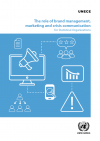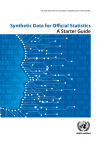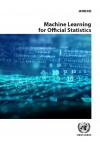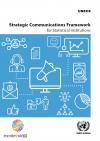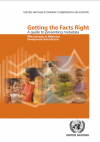Modernization of official statistics
Introduction
Official statistical producers operate in a rapidly changing landscape, where the pace of change accelerates annually. Increasingly complex societal issues demand more timely, disaggregated statistics and diverse data services. Adoption of new data sources like administrative and big data poses challenges in analysis methods, data access, ethics, and privacy. Amidst competition from other data providers, statistical organizations must enhance product communication and brand advocacy for trustworthiness. To tackle these challenges, statistical organizations must invest in modernization, staff capabilities, and technology Despite limited resources, efficiency improvements are crucial to ensure adaptability and resilience in the dynamic data ecosystem.
The HLG-MOS provides a collaborative platform for experts in statistics organizations to develop modernization and innovation strategies and solutions in a flexible and agile way. It has made several important contributions to the modernisation of official statistics such as the Generic Statistical Business Process Model (GSBPM) and the Generic Statistical Information Model (GSIM). The HLG-MOS projects in areas of machine learning, synthetic data, big data and strategic communication spearheaded the implementation of new technologies, methods and other capabilities in statistical organisations.
Key areas of work
In focus
Highlights
Recent outputs
- Cloud for official statistics: explores the opportunities and challenges presented by cloud technology, offering nuanced perspectives and practical guidelines drawn from diverse statistical organizations. With a focus on key themes, the publication aims to help organizations to navigate their unique cloud journey with confidence.
- Large Language Models for Methodological Advice: summarizes the quick experiments we conducted about using LLMs for methodological advice and lessons learned from the results. It underscores the importance of exercising caution when solely relying on insights generated by LLMs, particularly for methodological advice.
- Data Governance Framework for Statistical Interoperability: explores the issue of interoperability in statistical organizations. It provides analysis of interoperability concept, sources of non-interoperability throughout statistical production process, and highlights factors that help building the governing system to support the interoperability in statistical organizations.
- GSIM version 2.0: GSIM provides a set of standardized information classes that are used in the design and production of statistics. It can improve the communication between business and IT experts as well as between different subject-matter-domains, creating an environment for re-use and sharing of methods, components and processes.
- Organisational aspects of implementing ML-based data editing in statistical production: reflections on key issues, guidelines for overcoming barriers, and insights into MLOps implementation, that are also transferrable and applicable for the acceleration of ML adoption in other application areas.
- Strategic Communication during the Inflation Crisis: following the main strategic communication elements outlined in the Strategic Communication Framework (2019) (https://lnkd.in/exbDnurm), the paper was developed based on strategies and concrete actions taken by statistical organisations.
Upcoming Events
United Nations
1211 Geneva
Switzerland
Recent Events
Geneva Switzerland







